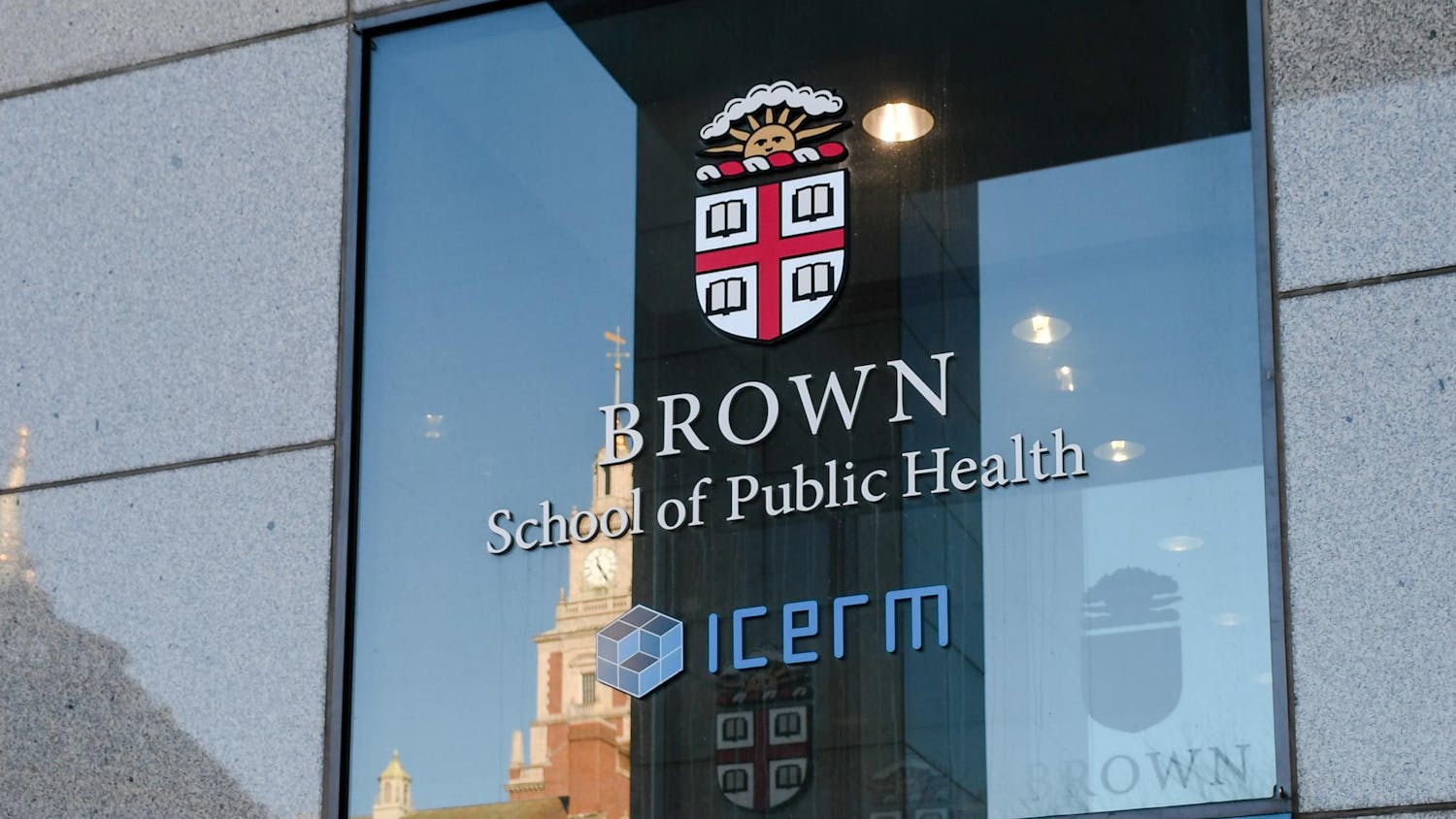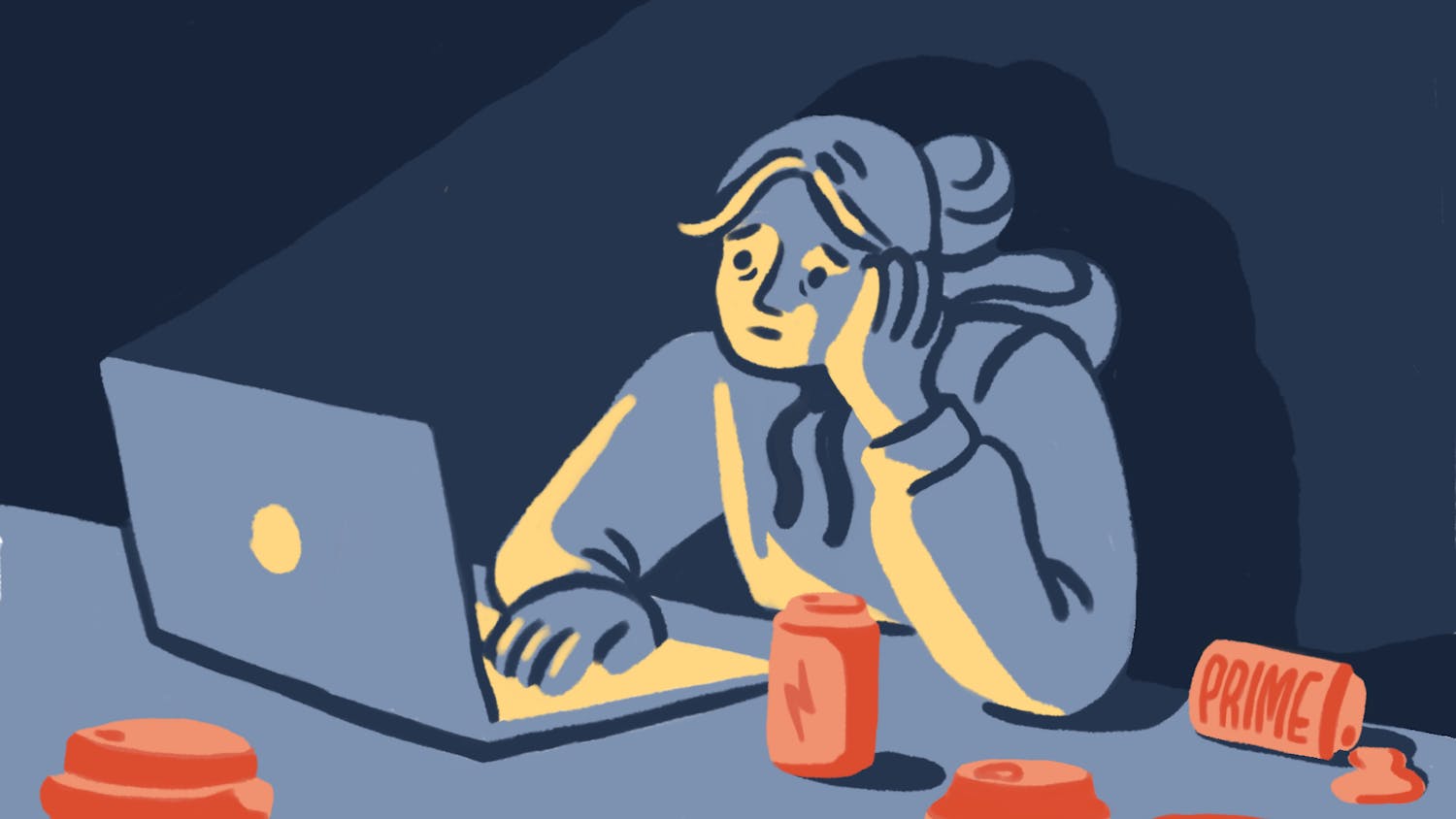In the arts, we are all learners,” said Lisa Wong, pediatrician, musician and author of “Scales to Scalpels: Doctors Who Practice the Healing Arts of Music and Medicine,” addressing the symbiotic relationship between medicine and the arts in a lecture Wednesday in Pembroke Hall.
“Musicians can learn from physicians,” Wong told students and community members assembled in Pembroke Hall. “Doctors can learn from musicians,” she said, adding that she believes music has the power to heal.
“Who in here plays an instrument? Who is an artist?” Wong asked, prompting almost all of the audience members to raise their hands.
Wong’s presentation focused on her book and life’s work of revealing the parallels between music and medicine and challenging common beliefs about the perceived polarity of the two fields.
Wong said she grew up playing the violin, viola and piano. Her musical initiation began in school with her first instrument, a baritone. The instrument was “too big” for her petite frame, her petite frame, so she switched to violin.
She attended Punahou School, a private school in Honolulu that is also President Obama’s alma mater.
“Obama was in eighth grade when I graduated,” she said.
Wong aimed to uphold Punahou’s commitment to service by volunteering at Shriners Hospital for Crippled Children. Each week, she visited several bedridden children — both locals and foreigners who were recovering from surgeries — and played them music.
“By the time I graduated from Punahou, my path was clear — I wanted to be either a music educator or music therapist, or somebody who worked with children in a healing setting through music,” Wong said.
After graduating from Punahou, she matriculated at Harvard, where she became friends with cellist Yo-Yo Ma, who lived in her dorm. She later pursued a medical degree at New York University and completed her pediatric residency at Massachusetts General Hospital. She currently works as a pediatrician at Milton Pediatric Associates.
But her career extends far beyond the medical exam room. Wong has devoted her life to focusing on the merging of the arts and sciences. Arts require “collaboration, curiosity, (the) ability to listen,” she said, adding that “it’s a way of thinking that weaves together disparate ideas.”
To be an artist, one must “evaluate information, recognize patterns and build on previous knowledge and technical skills,” she said, simultaneously demonstrating how a physician employs the same three processes.
Wong also served as president of the Longwood Symphony Orchestra, a Boston-based group comprising medical professionals devoted to the healing properties of music. Wong joined the orchestra during her residency and became president in 1991. The orchestra partners with three Boston hospitals and 18 medical schools and has worked with 48 local health care organizations since its inception.
As a member of the orchestra, Wong said she has found that “every patient has a story,” and that the ensemble walks away from each concert “having learned more from our performance than the people we were playing for.”
Throughout her talk, she cited numerous anecdotes and messages from colleagues, musicians, medical professionals and people who have inspired her work.
Wong repeatedly stressed the importance of the “transcending technique,” an idea she borrowed from Ma.
She also told a story about her friend Terry Buchmiller, a pediatric surgeon at Boston Children’s Hospital who incorporates music into the operating room.
A music teacher once asked Buchmiller to practice eight bars of a Mendelssohn concerto for an entire week in as many different ways as she could.
Buchmiller “thinks of that when doing surgery and tying knots, because every knot is different,” Wong said. The knots depend on the “size of the child, the condition and the situation,” she said.
Wong also mentioned Thomas Sudhof, a recipient of the 2013 Nobel Prize in Physiology or Medicine, who cites his basoon teacher as his most influential instructor. Sudhof credits his ability “to practice and listen” as a doctor to his teacher’s music lessons, Wong said.
This fusion of music and medicine is not a new idea. Wong cites Theodor Billroth as inspiration. Billroth was an amateur violist, music writer, pioneer in cancer technology and refiner of anesthesia in the 1800s who claimed differentiating the arts and sciences was a “superficiality.” Wong noted physicians who have studied relationships between music and neuroscience, pitch perception and dyslexia.
Several students in attendance told The Herald they appreciated what they viewed as Wong’s passionate presentation.
“(Wong) points to the fascinating idea that music and medicine are not on opposite sides of the spectrum, but are more deeply interconnected and rooted in similar sentiments than many people believe,” said Connie Liou ’16 MD’20.
“I really liked how Dr. Wong visualized music and how it can affect various tiers of the individual, of the community and of the world and our experience,” said Lauren Galvan ’16 MD’20.
Galvan, an independent concentrator in mental health and healing, said she played the saxophone for seven years. A class in which she is currently enrolled, PLME 0500: “Creative Dimensions of Medical Decision-Making,” inspired her to attend the lecture.
“I never once thought of saxophone and the musical process as related to medicine or my future goals at all,” she said. “But to see someone trying to connect them and what she had to say made me connect my past self with my present self and future goals.”
Bill Zahn ’16 said, “It’s exciting to explore the intersection of medicine and humanities, because we have a real need for humanist physicians who are comfortable with the ambiguity and creativity of the discipline.”
Wong concluded her lecture by addressing the challenges that today’s youth face with music.
Though varying curriculums and “different priorities” have edged out music in schools, Wong encouraged students to pursue music to foster “interdisciplinary” and “creativity.”
She also addressed students who are concerned about their interests in both art and science. “There’s a lot of question about how to balance the art form that I love and my education while serving the community,” she said.
“The balance is always going to be one that fades in and fades out. But it can be done. So I encourage you just to enjoy the ride.”
“Scales to Scalpels” was the third event in the 2014-2015 Creative Medicine Series co-sponsored by the Department of Emergency Medicine, the Creative Arts Council and the Cogut Center for the Humanities.




